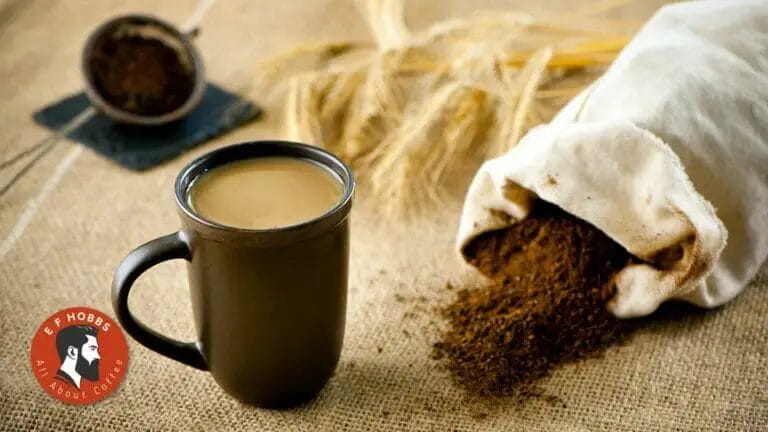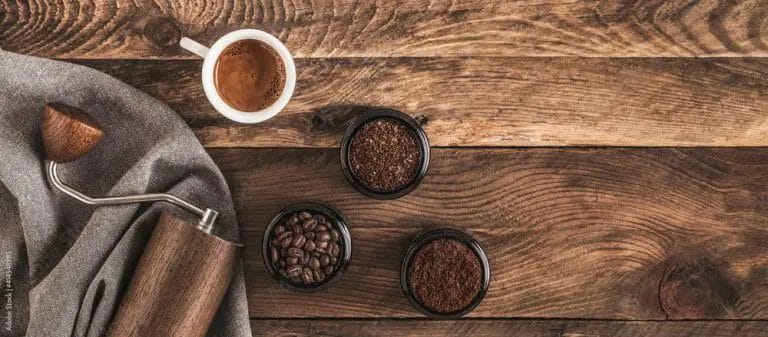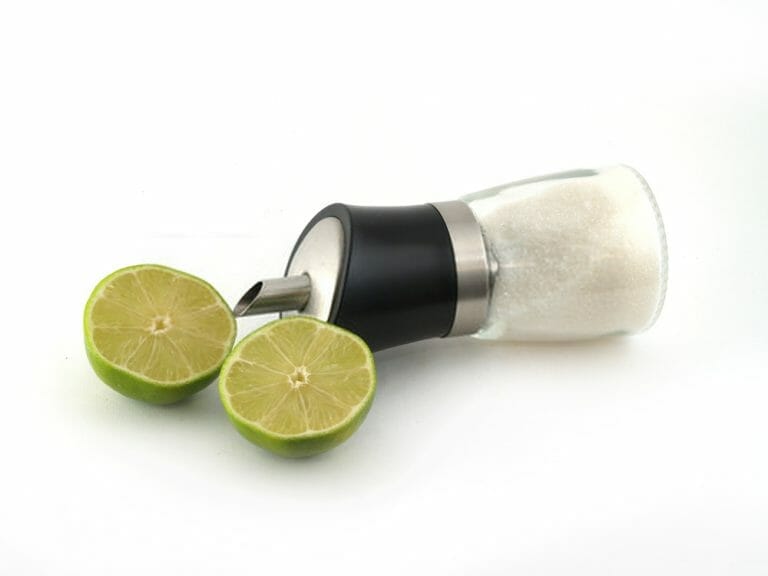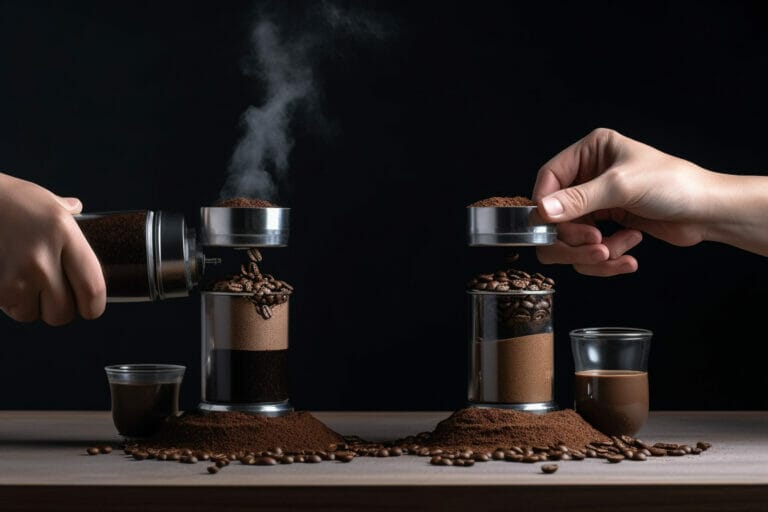Where Does Coffee Come From?

No one wants to think about life without coffee. It has been around for thousands of years and is loved by many cultures.
But sometimes, do you ponder where this coffee comes from?
Coffee, one of the world’s most popular drinks that get people going. Coffee is a drink that connects us to the world.
We put a lot of effort into growing coffee beans and drink them in large quantities. This is not mainly a new trend.
Coffee has been a staple for hundreds of years. It’s been both a vital plant historically and politically, as well as economically. We should know where and how it’s grown, how it’s made, and who does it best.
Let’s start at the beginning…
Where did Coffee originate?
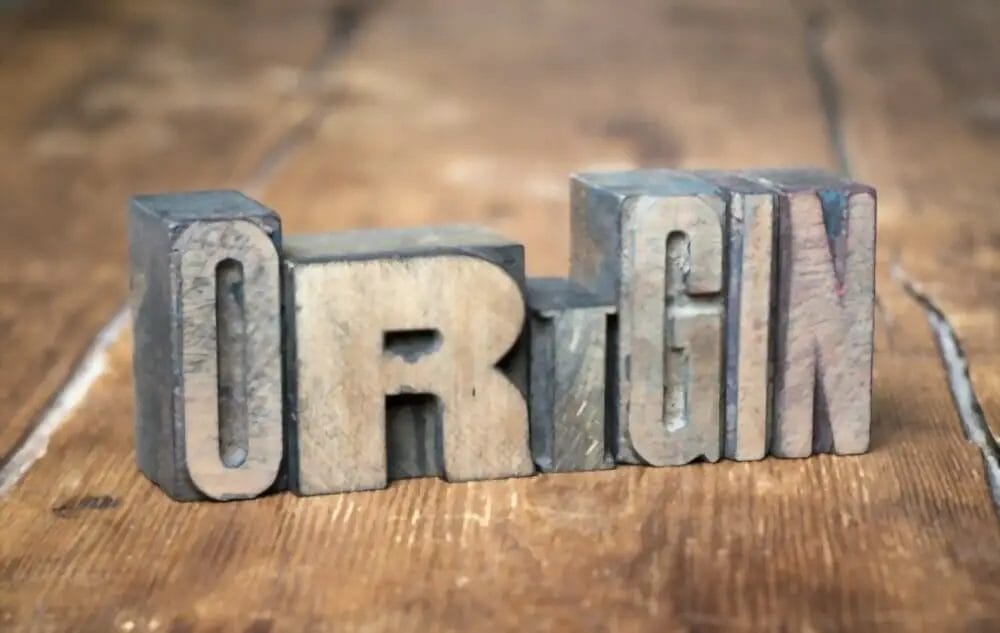
“Coffee’s origins can be found in a handful of different legends and stories.”
The most prevalent is an Ethiopian tale of the ninth century about a goat herder named Kaldi. He noted that the goats became more energized after eating berries from the coffee tree. They couldn’t sleep because of their high energy levels.
Kaldi had found that eating berries produced a feeling of vigor and mental clarity. He brought this to the notice of a nearby monastery, and they had the same experience. A word about coffee’s stimulant effects came to light then.
Yemen has a similar origin story. In the 13th century, a Sufi monk from North Africa noticed that birds would fly energetically after eating coffee beans.
When he tried the coffee himself, he felt alert and alive. Ethiopian coffee-drinking history claims that the monk traveled through Ethiopia when he discovered how coffee beans could affect the human body.
So we may never know the truth about the discovery of coffee. We know that the coffee bean comes from Ethiopia and people started roasting coffee beans around the 13th century.
Religious sects used coffee in Yemen to stay awake for worship. The earliest records of coffee indicate that it was first discovered in Ethiopia and then brought to Yemen. This is where coffee's popularity took off.
Types of Coffee Species
Among hundreds of different coffee species, Arabica and Robusta are the most popular that we consume.
It’s hard to tell the difference between Arabica and Robusta when they’re just green beans. But once you get a cup of coffee, you know the difference.
Arabica
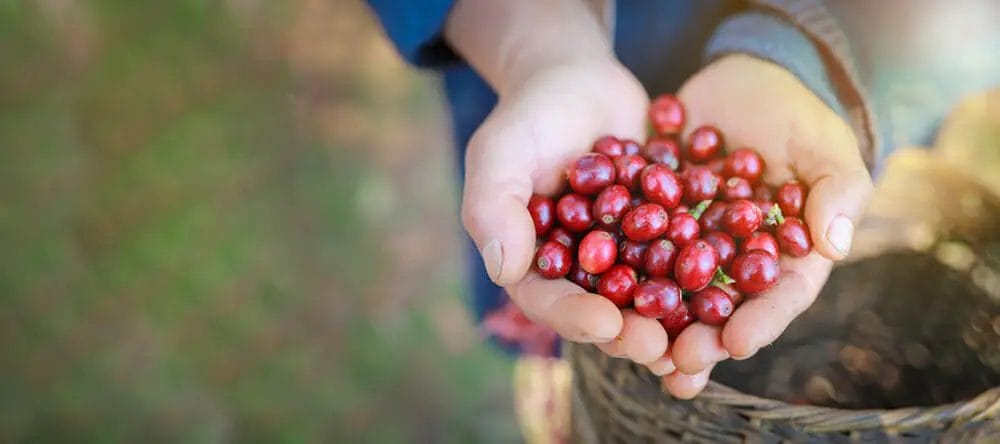
Arabica beans are more popular. However, they’re more expensive because they’re in smaller supply and not as hardy.
They grow at higher altitudes, which makes them harder to cultivate. Arabica beans don't grow in the same areas as robusta trees.
It has a richer taste when made into coffee and a milder smell, often described as ‘sweeter’ or ‘less bitter’ than robustas.
Arabica is the species used in specialty coffee, and it is considered the more desirable of the two species.
Its acidity is vibrant, its caffeine content is moderate, and it has a massively varied flavor profile. Arabica coffee can have delicate flavors and tea-like qualities but also robust, fruity notes.
It prefers an ideal temperature between 15 and 24 degrees Celsius. The tree has a deep root system that requires nutrient-rich soil.
Arabica coffee is 75% of production in the world and fetches three times what Robusta does.
Robusta
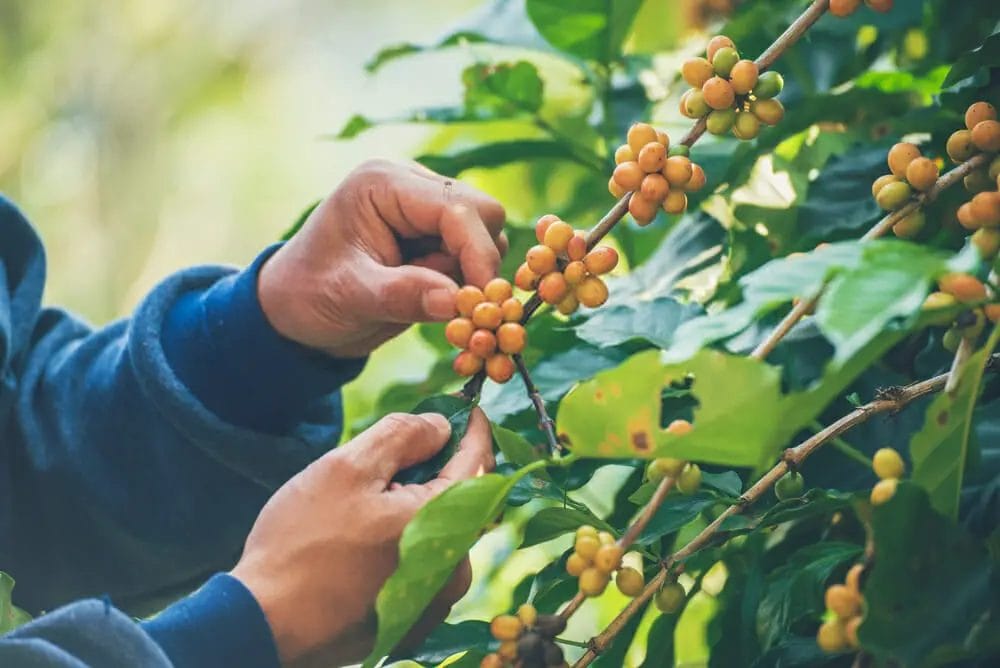
Robusta trees are more prolific, which is why they’re cheaper to grow. They’re easier and cheaper to cultivate and are more complex than Arabica.
There’s a more bitter taste when made into coffee, and it has a more pungent smell.
For dense and sturdy coffee plants of robusta varieties, the trees need milder conditions. They’re best suited for monsoon climates.
Robusta trees grow up to 16 meters. These trees are a few feet shorter than the more expensive Arabica variety.
Robusta coffee can grow at lower altitudes and also at higher temperatures. Robusta coffee can be produced cheaply and has a long shelf life, which is why it often makes its way into instant coffee and espresso blends.
Since its flavor profile is not publicized, a specialty coffee shop occasionally does not include its offerings.
Robusta coffee makes up about a quarter of all coffee production, and Vietnam is the world's leading producer.
What do coffee beans grow on?
Did you know that a coffee bean is considered a fruit, and the word ‘coffee’ refers to the coffee cherry? Coffee beans grow on trees that can take from two to four years to produce beans ready for harvesting.
A matured, healthy coffee plant can usually grow to between 30-40 feet tall. A coffee plant begins as a plant but later develops into a tree.
When the berries are red, they're ready to be harvested.
Types of Coffee Processing

Coffee processing is the process that takes place after coffee cherries have been picked and sorted.
There are three main methods used during the process of coffee: natural, washed, and honey. Each technique brings out an individual and strangely diverse taste to the coffee.
The less common methods include anaerobic fermentation and carbonic maceration. There is also C02 decaffeination which is used for removing caffeine from brewed coffee beans, but this process takes place later in the production process.
Today, we're going to focus on these three most commonly used processing methods--natural, washed, and honey processing--and their differences in flavor profiles and how they affect your cup of coffee.
1. Natural Processing
Natural coffee processing is also called dry processing. Coffee plants are dried in the sun. After this process takes place, the parchment layer is peeled off, and the beans are then sent off to be taken care of in a roaster.
The natural method produces an uneven and very distinct taste. The flavors tend to be more complex, and they're known to have an organic and earthy quality.
There’s also a “hint” of the chocolate present in the coffee. This method is used in Africa and Central America when producing beans without any additives.
2. Washed Processing
Washed coffee processing produces a cleaner taste that’s milder in flavor and more balanced than natural processing.
It’s a trademark of Colombia and Brazil. Washed coffee processing removes the pulp that’s present in natural coffee processing, such as the parchment layer.
The washed method is used to produce a milder and smoother taste. The flavors in this process vary from delicate flowery notes to big chocolate flavors.
A prevalent variety of washed coffee is called Arabica. Arabica beans are scoured by hand, making the silky outer layer called parchment paper very thin.
Then, water and a mixture of acid are added to these beans to bring out their flavor.
3. Honey Processing
Honey processing proves a noticeable location midway between washed and natural products. The process usually produces a sweeter coffee without the wine-like, fermented flavors of natural coffee.
The honey processing method does not happen with honey.
Coffee beans are obtained by drying green coffee seeds, which then can be finely ground or milled. Some of the mucilage remains on the seed in the honey process as it’s left to dry. This causes the coffee to taste sweeter.
There are three levels of honey processing— yellow, red, and black. These different levels refer to the volume of mucilage that is left on the seed. A darker coffee might have more sugar.
Where Does the Best Coffee Come From?

It all starts in a valley in the ‘coffee belt.’ The valley has everything that a coffee tree needs to grow and grow big: high altitude, nutrient-rich soil, and distinct wet and dry seasons.
This is because of its location on Earth’s surface – as the planet rotates around the sun (once every 24 hours), different parts of it are either hot or cold for more extended periods; the valleys and higher altitudes stay cooler longer during these cycles.
The 'coffee belt' stretches around our planet like a long strip of garden land - running through Ethiopia, Kenya, Costa Rica, Brazil, Guatemala, Vietnam, Indonesia. And Colombia.
How does coffee get from the plant to your cup?

Coffee travels through a tedious journey to get to your cup from the trees.
Here are six steps to manufacturing coffee:
1. Harvesting coffee beans
In most regions, the best ones are plucked when they turn red and sweet. Some countries have been able to mechanize how coffee is harvested. Brazil, for example, has mechanized its harvesting in flat areas of its landscape.
There are two ways of harvesting coffee beans. One is by stripping the cherries from a branch at once, and the other is by picking each cherry individually.
Other is the selective picking method, and only the ripe cherries are removed.
2. Drying coffee beans
Drying the cherries is crucial to ensure quality because the caffeine content determines how much the beans will be worth after processing.
Coffee is processed either by the dry method or the wet method. In the dry method, After the cherries are harvested, they are spread out to dry in the sun.
Pulping technique is used; the cherries go through a machine to extract the fluid. To remove the mucilage that coats the beans, they are transferred to a water-filled fermentation tank. After two days, the beans are prepared to dry in the sun.
3. Coffee processing
Once the beans reach 11% moisture content, they are ready for processing. To make coffee beans shiny, some companies polish the beans. This is an optional step that removes any leftover silver skin on the beans.
They are sorted by size and weight. Beans with flaws or blemishes would be taken out first. Only the best coffee beans are exported. They are sorted by hand and by machine to ensure they're of high quality.
FAQs
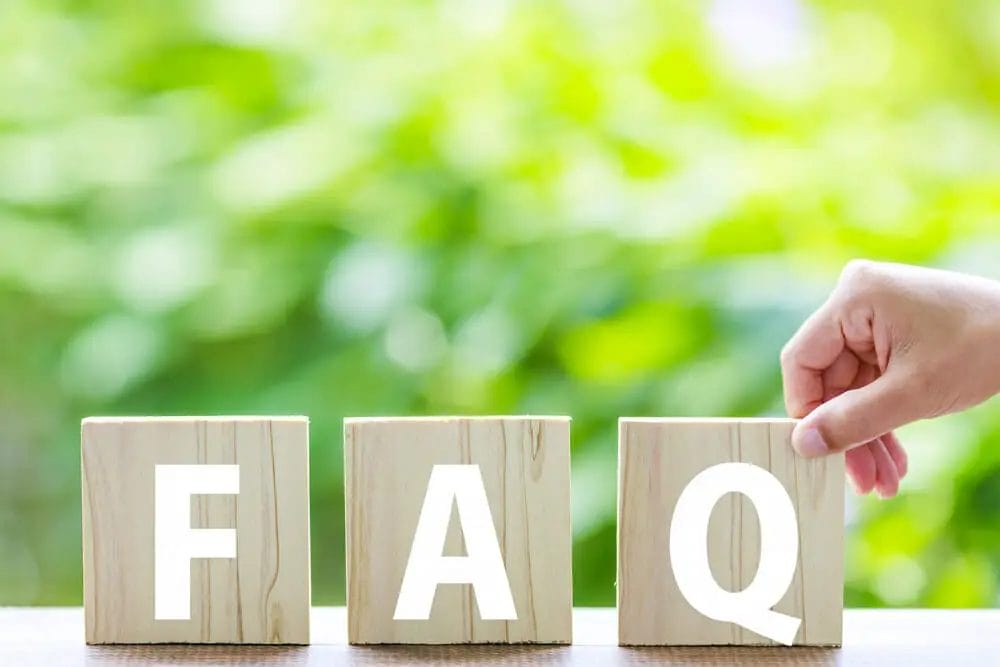
1.Does coffee come from cocoa beans?
To answer the first question, yes, coffee does come from cocoa beans. Cocoa beans and coffee seeds share the same plant — the only difference is that the cherry (bean) on the coffee tree grows to full size but doesn’t produce seeds.
As a result, you will have a few small green fruit-like things around your cup while enjoying your morning cup of coffee.
2.Where does coffee come from in the world?
If you are a coffee lover, then you might be interested in answer to the second question. Coffee comes from diverse points around the world.
To name a few, coffee grows in Africa, Asia, Europe, and South America. Coffee grows best in regions with a mild tropical climate and warm weather — between 60° and 70° F is optimal for growing coffee beans.
Well-known areas for growing coffee plants include Mexico, Honduras, Brazil, Indonesia, and Ethiopia.
3.Why does coffee come out bitter?
The way coffee is brewed the answer to this question. The key to producing a cup of coffee with the flavor and taste that you like is brewing time, water temperature, and how much coffee you put in your cup.
While most people use a drip filter or an automatic pot for making coffee, it is essential to note that the quality of a filter or pot makes a difference in how well your brew turns out.
4.How to make the best coffee at home?
When making the best coffee at home, there are a few tips that you need to get right. The first tip is when you grind your beans, use a burr grinder.
This ensures uniformity in the size of the grounds. Secondly, remember that water temperature matters when it comes to producing the best brew for your cup of coffee.
Thirdly, buy a decent coffee maker. While a cheap coffee maker may seem like a bargain compared to an expensive one, you are likely to end up with low-quality coffee with your bargain.
Where is coffee found naturally?
Coffee is found naturally in both its bean and fruit forms. In fact, nearly all coffee plantations are found in tropical areas of the world. In these areas, wet, fertile soil is ideal for the growth of coffee trees. The majority of coffee farms are located in Indonesia and Mexico, countries that have a long tradition of growing and harvesting coffee plants from local forests.
Is coffee from Africa or America?
Coffee was originally cultivated in Ethiopia, so it is considered to be an African plant that has been cultivated for centuries. However, this plant is grown in other parts of the world as well, so it is more correct to say that coffee is grown in Africa and Central and South America, though most of the world’s supply comes from Brazil.
Who invented drinking coffee?
Legend has it that a sheikh from the Yemen was enjoying a cup of coffee at his campfire when some of his nearby followers began to notice the effects of caffeine. They saw the sheikh enjoying his cup and asked if they could try it as well.
How much coffee do Americans consume?
Americans average two cups of coffee each day, totalling an impressive 84 million cups per day consumed within our borders alone. This is far more than Europe and Asia, where less than half as many cups are consumed each day per capita.
What did people drink before coffee?
Most people believe that coffee was popularized in Europe in the 17th century. This is not true, however. As part of a general trend for drinking tea, coffee appeared throughout the Eastern Hemisphere rather than in Europe. In fact, coffee was being grown in Yemen sometime as far back as 900 B.C.
What country grows the best coffee?
That is another difficult question to answer, since there are so many factors that determine the quality of coffee. The French roast style is often considered the best, and Brazil’s mild climate allows them to produce a very large amount of high-quality coffee beans.
Why is African coffee so good?
The low-lying areas that are used to grow coffee are accustomed to volcanic eruptions and other forms of extreme weather. This gives the beans a more robust flavor than those in other areas, which have been replaced by other plants over time.
Which came first tea or coffee?
Both were known about and consumed for their medicinal properties around the world for hundreds of years, with tea being drunk in China as far back as 2737 B.C. Coffee appeared much later (about 1000 A.D.), so while neither was a novelty, coffee was considered a rare luxury until 1669 when it appeared in Egypt and made its way to Europe shortly thereafter.
Which country drinks the most coffee?
Finland. Although Americans have been drinking coffee for a much shorter period of time than the Finns, they drink more overall. However, they drink many non-coffee-related drinks as well.
Which coffee is most expensive in the world?
Kopi Luwak is often considered the most expensive coffee in the world. It’s made from coffee beans that have been eaten and then excreted by an Indonesian civet.
Conclusion

So, the next time someone asks you about Coffee- What is it made of? Or where does it comes From? Or, For that matter, How is it grown?
You should be able to answer that with ease. Hopefully, this article helped to answer your questions.
Thanks for reading!

